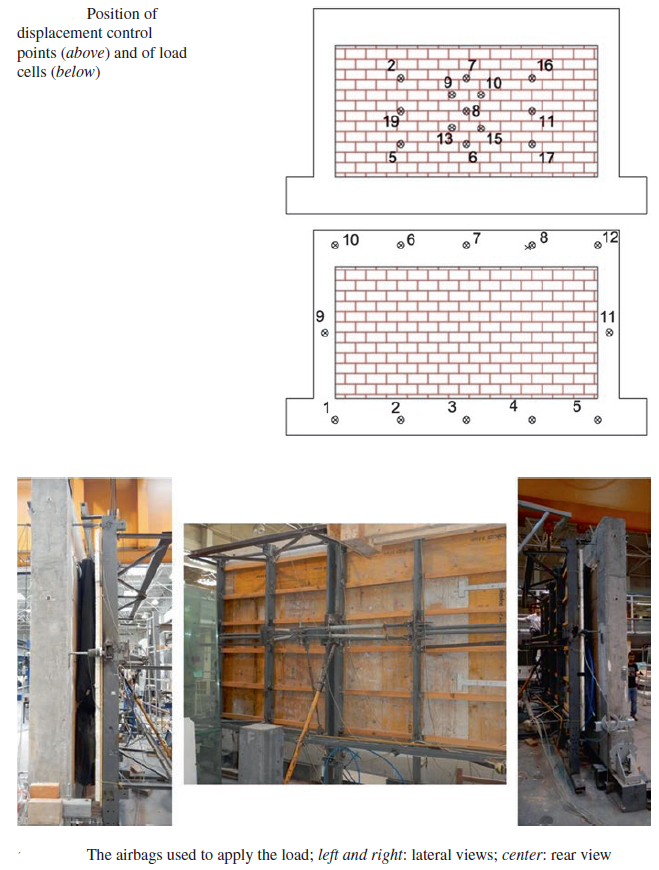In this paper, an innovative solution of earthquake-safe and eco-friendly infill panels is presented, which are, at the same time, thermally and acoustically efficient, thus avoiding waste of energy and respecting the environment. The proposed innovative technology is tested with different surface finishes, boundary conditions and temperatures. A comparison of the proposed technology with respect to conventional infill typologies is provided, highlighting pros and cons
PROBLEM
The recent earthquakes that occurred in Central Italy, in L’Aquila in 2009 and in Amatrice in 2016, have shown, once again, how infill panels and partitions, widely used as non-structural elements in reinforced concrete frames, are significantly vulnerable when subjected to seismic actions. Moreover, they highly affect the structural behavior and seismic response of typical, multi-story buildings, strongly influencing their repair costs due to the inevitable damage they usually undergo during seismic events. Therefore, they should be designed to withstand earthquakes forces, both in-plane and out-of-plane, so to ensure the safety of the occupants. In addition to seismic performance, infill panels play the primary role of providing comfort to occupants through adequate thermal and acoustic insulation.
AIM AND SCOPE
These tests represent the first part of a larger campaign aimed at studying the influence of the in-plane deformation on the out-of-plane resistance and at quantifying the energy dissipation in both mechanisms. The results of three, full-scale walls tested under different boundary conditions and surface finishes are presented here. The tests were carried out at the laboratory of the Faculty of Engineering of the University of Porto, Portugal. Figure below shows the configuration of the concrete frame/wall system, indicating the different boundary conditions along the interface between the infill panel and the concrete frame.
DESIGN AND CONSTRUCTION OF THE TEST SPECIMENS:
Shaking table tests on four single-story RC structures with and without URM panels were performed to investigate the out-of-plane behavior of the panels. The test results suggest that confined masonry panels can sustain considerable out-of-plane seismic loads. Strong boundary connections prevent confined masonry panels from falling out of the frame, reducing the influence of the inertial force from the panel’s self-weight. The two-hinged arching damage and deformation pattern could explain the out-of- plane resisting mechanism. The infill-type panels showed the same behavior as confined masonry panels until their boundaries were damaged. When infill panels separated from their boundary frames, they collapsed due to the out-of-plane inertial force caused by their self-weight. This indicates that the out-of-plane capacity of infill-type panels can be improved if their boundaries are properly strengthened. Panel thickness or slenderness is another main factor that affects the out-of-plane behavior. A double wythe confined masonry panel exhibited much higher strength and stiffness than a single wythe panel.
Specimen:

Test setup:

CONCLUSIONS
Previous experimental tests have shown that the in-plane displacement safely sustained by the proposed infill technology is about double, the limit value imposed by the Italian code NTC-08. Furthermore, the displacement capacity in the out-of-plane test is higher than all other conventional systems and equal to 150 mm before collapse for upper constraint failure. In the second part of the tests, better performance of the infill panels was observed in terms of maximum resistance, due to, (a) better confinement effects from the frame and (b) better transmission of tangential forces provided by anchorages and polyurethane foam. The effect of surface finish was studied and gave important insight into the behavior of the wall in ordinary conditions. In particular, it was observed that, in case of good constraints, the walls exhibit high performance for both resistance and deformation capacity up to a displacement of about 60 mm. When the perimeter constraints are not optimal, the wall still had exceptional performance in terms of deformation capacity but showed larger residual deformation. The innovative system of dry infill panels also gives an important contribution in terms of energy dissipation, and future studies will allow this technology to advance.
Comparison with traditional infills shows that the proposed technology has much better performance. Traditional infills fail under a much lower acceleration than the infill walls proposed here. As regards the effects of temperature on the plastic parts, the tests showed that two conditions must be considered in relation to the condition where the wall will work. In particular conditions and in the presence of fire, it is possible to resort to a particular solution of surface finish, such as fireproof plaster or panels. The acoustic and thermal performance of the proposed infills are also found to be much better than those of traditional infills. The proposed infill with an EPS panel (Sintered Expanded Polystyrene) gives the higher value in terms of the softening factor, while the thermal wave shift is comparable to all others. Note that the periodic thermal transmittance is under the limit established by the rules for cases where the frontal mass is less than 230 kg/m2. In the final analysis, it can be stated that the proposed innovative system represents an effective solution for buildings following modern design concepts, investing lower financial resources and reducing the environmental impact.
RECOMMENDATIONS FOR FUTURE RESEARCH
None were specified.









